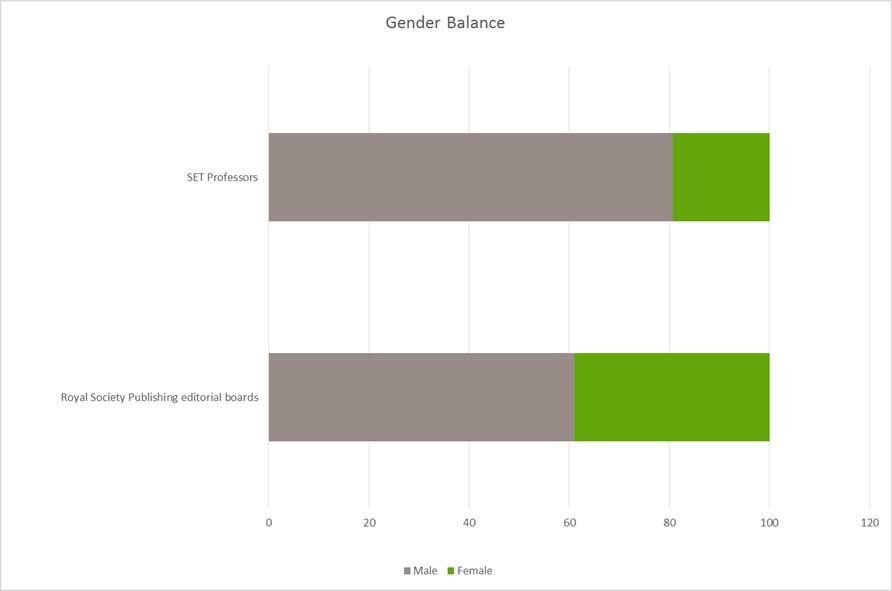The Royal Society is committed to increasing diversity in science and our journals can play an important role in helping to achieve this.

Diversity is essential to delivering the very best science. A diverse and inclusive scientific workforce draws from the widest range of backgrounds, perspectives and experiences thereby maximising innovation and creativity in science for the benefit of all. There is major variation in gender diversity by geographical region and discipline as outlined in the recent report Gender in the global research landscape.
The Royal Society is committed to increasing diversity in science and our journals can play an important role in helping to achieve this.
Our journals are built upon the expertise of their editorial boards – groups of scientists who advise on the scholarly content of the journal, select reviewers and make recommendations to the Editor as to whether to publish a piece of research. We have been looking at the gender diversity on these editorial boards to ensure we are drawing from the very best.
Getting published is essential for a scientist’s career, so it is important that all aspects of the publishing process is as fair and unbiased as possible. To help ensure this, we regularly make board members aware of unconscious bias.
The current situation
In 2016, we audited the membership of our editorial boards. Our results showed that 39% of board members are female, although this varied by journal and scientific discipline. This is encouraging in comparison to figures reported across the scientific population as a whole, where four out of five SET (science engineering technology) professors were male (80.7%).

Gender balance of SET professors vs Royal Society Publishing editorial boards
The need for further action
Board members are appointed for three years on a staggered basis such that each year there is the opportunity to refresh membership. Editorial staff at the Society and academic Editors-in-Chiefs are actively encouraging female researchers to join their journal editorial boards. Our largest journal editorial board, Proceedings B, was comprised of 30% female members last year. More recently, the vast majority of new board members appointed are female. This is encouraging as we often find that the smaller pool of female scientists is kept very busy, since they are invited to join many committees.
A bigger challenge is in finding female scientists able to accept the leadership role of Editor-in-Chief of a given journal. Candidates for this role are usually drawn from the Fellowship, but the gender balance of the Fellowship means that the pool of female candidates available and having the time to commit to such a role is limited. Even more effort is therefore required to achieve good diversity in these roles.
In this context, the recent appointment of Wendy Hall as Chair of the Society’s Publishing Board is a very positive step.
